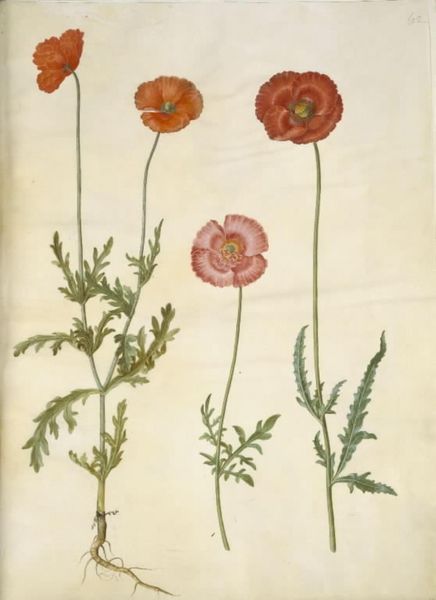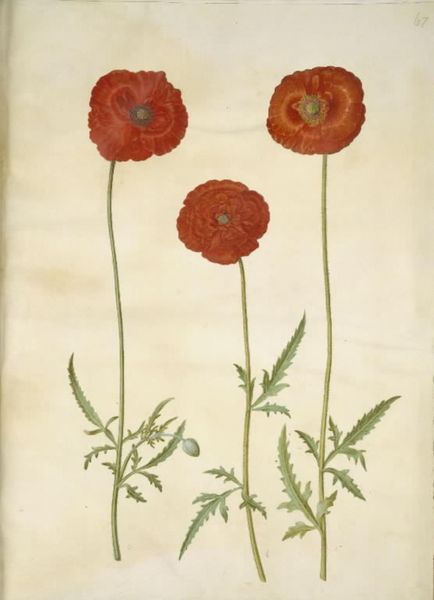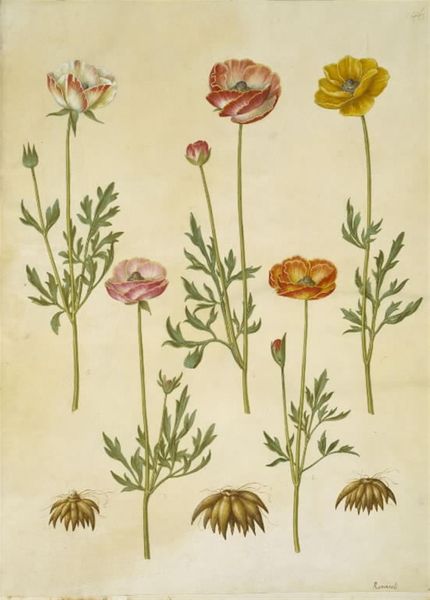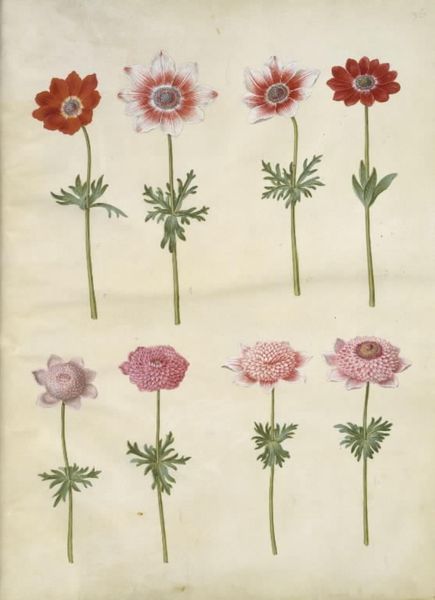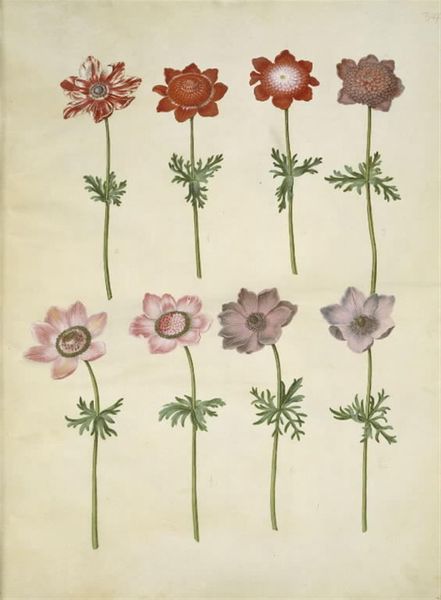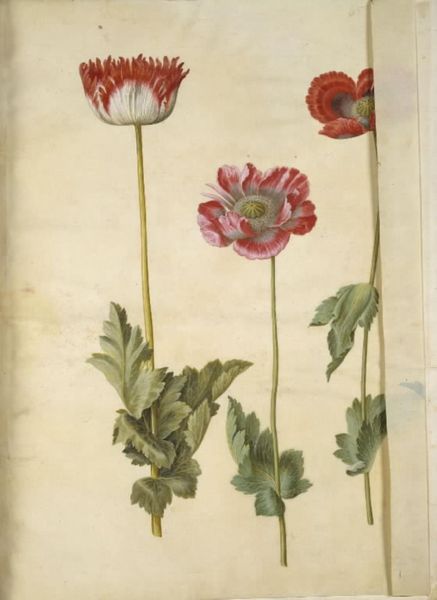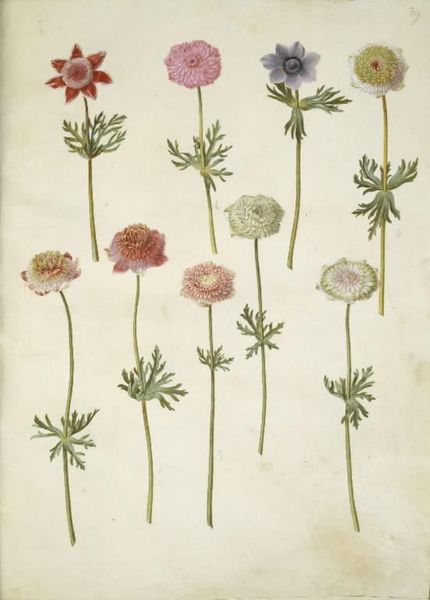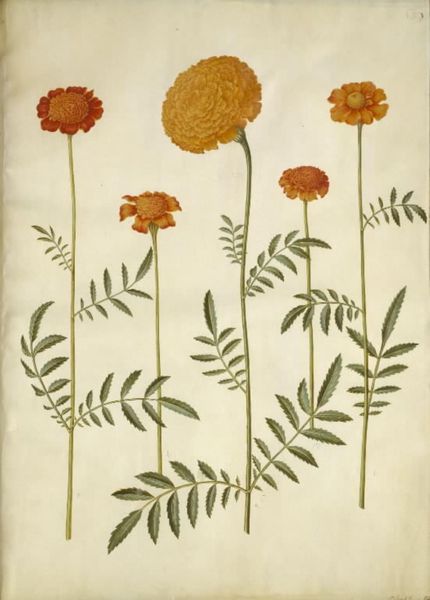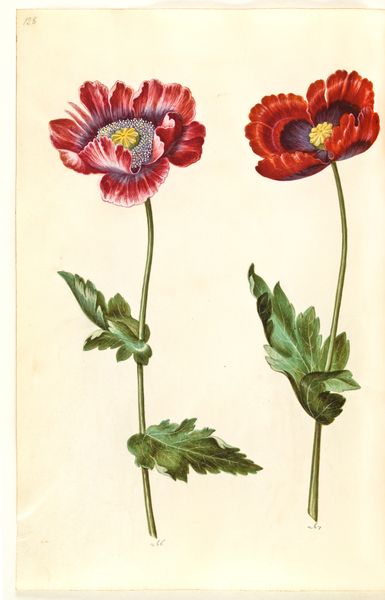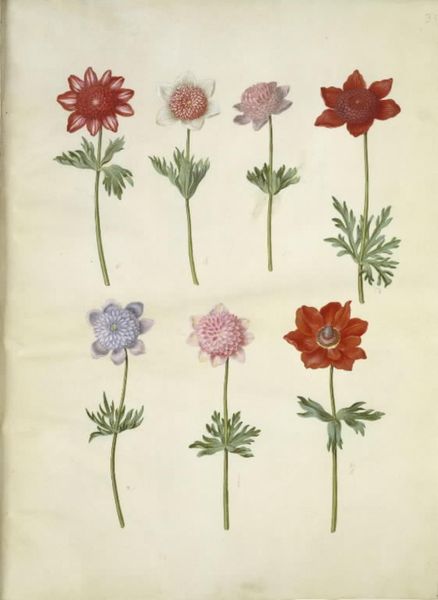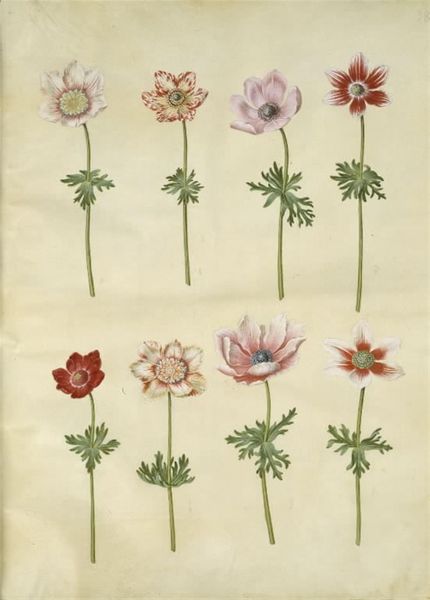
drawing, gouache, oil-paint, watercolor
#
drawing
#
gouache
#
oil-paint
#
landscape
#
11_renaissance
#
watercolor
#
watercolour illustration
#
northern-renaissance
#
botanical art
Dimensions: 505 mm (height) x 385 mm (width) (bladmaal)
Editor: This is "Papaver rhoeas (korn-valmue)," or corn poppy, by Hans Simon Holtzbecker, created sometime between 1649 and 1659. It's made with drawing, gouache, oil paint, and watercolor, and it gives me a delicate, almost scientific illustration vibe. How do you see this work? Curator: The precision immediately speaks to a very particular societal need during that period. Consider the rise of botanical gardens and the growing importance of scientific observation during the Renaissance. Such gardens needed artists who were able to portray various exotic plants accurately for documentation. These detailed botanical studies weren't just about aesthetics; they were linked to the expanding influence of scientific thinking, driven by exploration and colonialism. Does that shift your perception at all? Editor: It does! I hadn’t thought about the link to colonialism. So these aren’t simply pretty flowers; they’re also evidence of a broader power dynamic. Was Holtzbecker connected to any specific institution? Curator: Exactly. These botanical artworks often were attached to powerful courts and academic institutions. Knowing the work is housed at the Statens Museum for Kunst is interesting as it has national cultural significance. Holtzbecker himself was a court painter in Copenhagen. This role gave him the access and commission structure to create this work. Considering that the poppy is commonly a symbol of sleep or even death, it's important to understand its cultural role and value at the time. What does knowing that add to your initial perspective of this piece? Editor: That adds so much richness. I originally just saw a pretty flower, but I see how wrong I was, there’s such deeper understanding in looking at historical motivations of institutions. Curator: Precisely! It reinforces the notion that art rarely exists in a vacuum, especially these botanical paintings, as such images helped codify and spread knowledge in a time of expanding global power and cultural dominance.
Comments
No comments
Be the first to comment and join the conversation on the ultimate creative platform.
